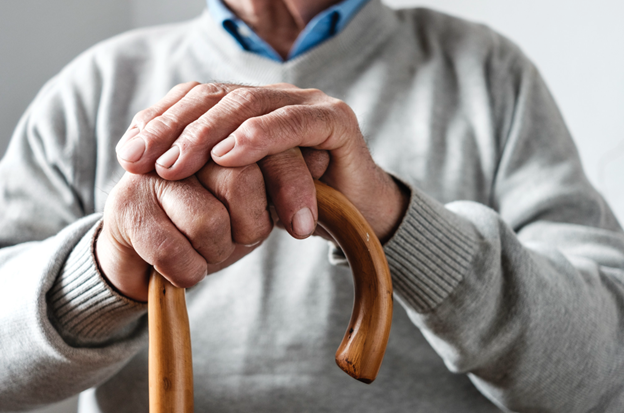Parkinson’s disease is a condition that affects the brain, often leading to tremors, stiffness, and difficulty with movement. Many people worldwide are impacted by it. Recognizing things like early signs of Parkinson’s disease can help with timely management. Understanding the Parkinson’s disease symptoms is key to supporting those affected and raising awareness about this illness.
Introduction: A Closer Look at Parkinson’s Disease
Parkinson’s disease is a significant medical condition that influences people’s ability to move and interact with the world. It’s a universal issue, affecting millions globally. Such a widespread impact necessitates increased awareness so people understand what happens once someone receives a diagnosis. Knowing more about living with Parkinson’s disease means dismissing myths and embracing facts. The more informed we are, the better we can support those who face this challenging journey daily.
Decoding Parkinson’s Disease
So, what is Parkinson’s disease? It is a disorder that causes loss of control over movements, leading to symptoms such as shaking and stiffness. It came to light thanks to Dr. James Parkinson, who studied its traits in the early 19th century. People diagnosed usually find their ability to carry out daily tasks affected as the condition progresses.
Recognizing Early Signs of Parkinson’s Disease
Spotting the early signs of Parkinson’s disease can be crucial for managing the illness. Many notice tremors or shaking, often in their hands or fingers. Rigidity or stiffness is another early sign.
Small handwriting
Loss of smell
Trouble sleeping
are not uncommon and part of non-motor signs. Some may also experience mood changes. Cognitive symptoms of Parkinson’s disease can include difficulties with attention and memory. At this stage, it’s crucial for families to encourage early intervention, which can make a significant difference in living with the disease.
Unraveling the Causes and Risk Factors
The exact cause of Parkinson’s disease is still not completely understood. However, researchers believe a mix of genetic and environmental factors may play a role. Genetics can influence some people’s likelihood of developing Parkinson’s, especially if family members have it. Exposure to toxins or a history of head injuries may also be potential risk factors.
Parkinson’s disease is more common as people age, with risk increasing significantly after age 60. Men are slightly more affected than women. Understanding these influences helps in directing research toward preventive measures, leading to better Parkinson’s disease treatment options eventually.
Navigating the Diagnosis and Stages
One of the major challenges in tackling Parkinson’s disease is reaching a diagnosis. Often, early Parkinson’s disease symptoms are mistaken for other conditions like stress or normal aging. A proper diagnosis often involves several tests and assessments over time.
The progression of the disease is usually divided into stages. These stages range from very mild symptoms to more pronounced physical disabilities. Recognizing these stages helps in planning treatment and interventions tailored to the individual’s evolving needs.
Parkinson’s Disease Treatment Options
While there’s no cure for Parkinson’s disease, treatments are available to help manage its symptoms. Most people start with medications. These drugs can improve quality of life by making it easier to move and reducing tremors. Additionally, surgical methods like Deep Brain Stimulation are available for those who respond less to medication.
Finding the right combination of treatments can greatly aid in managing Parkinson’s disease and keeping symptoms in check for a considerable time.
Adapting Lifestyle for Better Outcomes
Lifestyle changes can supplement Parkinson’s disease treatment options. Here are some ways:
Nutrition and Diet: A balanced diet full of fruits, vegetables, and fibers can help manage symptoms and support overall health.
Exercise: Regular exercises like walking, swimming, or yoga can maintain mobility and slow disease progression. These activities also help balance and flexibility.
Alternative Therapies: Many explore options like acupuncture or yoga to ease symptoms naturally. Combining these with traditional treatments provides a holistic approach to managing Parkinson’s.
Embracing Life with Parkinson’s Disease
Living with Parkinson’s disease demands patience and a positive attitude. Building a strong support system is vital. Encouragement from family and friends goes a long way. Using speech therapy to maintain communication skills and occupational therapy for daily tasks ensures independence for as long as possible.
Caregivers also need support as they assist loved ones. Community resources can offer guidance and relief, helping to ease the journey.
Hope on the Horizon: Advancements in Parkinson’s Research
There’s ongoing research into Parkinson’s disease that brings hope of future advancements. Researchers are investigating new drugs and treatments through clinical trials, aiming for breakthroughs in early diagnosis and better management techniques. Continuous support of this research is essential as it holds promise for dramatically improving life with Parkinson’s.
Conclusion: Moving Forward with Knowledge and Hope
To tackle Parkinson’s disease, awareness and early detection are vital. They allow for effective planning and better management of the condition. Continued research paves the way for innovative treatments that improve quality of life. Let’s move forward with knowledge, spreading hope and understanding the complexities of living with Parkinson’s disease.
Schedule a consultation today at Spandan Hospital and critical care!



